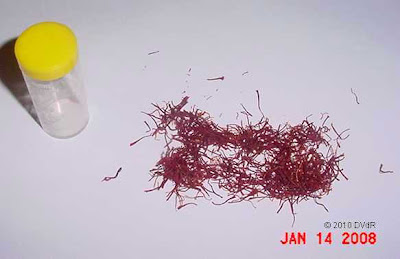In late 1986, four executives of the Monsanto Company, the leader in agricultural biotechnology, paid a visit to Vice President George Bush at the White House to make an unusual pitch.
Although the Reagan administration had been championing deregulation across multiple industries, Monsanto had a different idea: the company wanted its new technology, genetically modified food, to be governed by rules issued in Washington — and wanted the White House to champion the idea.
"There were no products at the time," Leonard Guarraia, a former Monsanto executive who attended the Bush meeting, recalled in a recent interview. "But we bugged him for regulation. We told him that we have to be regulated."
Government guidelines, the executives reasoned, would reassure a public that was growing skittish about the safety of this radical new science. Without such controls, they feared, consumers might become so wary they could doom the multibillion-dollar gamble that the industry was taking in its efforts to redesign plants using genes from other organisms — including other species.
In the weeks and months that followed, the White House complied, working behind the scenes to help Monsanto — long a political power with deep connections in Washington — get the regulations that it wanted.
It was an outcome that would be repeated, again and again, through three administrations. What Monsanto wished for from Washington, Monsanto — and, by extension, the biotechnology industry — got. If the company's strategy demanded regulations, rules favored by the industry were adopted. And when the company abruptly decided that it needed to throw off the regulations and speed its foods to market, the White House quickly ushered through an unusually generous policy of self-policing.
Even longtime Washington hands said that the control this nascent industry exerted over its own regulatory destiny — through the Environmental Protection Agency, the Agriculture Department and ultimately the Food and Drug Administration — was astonishing.
"In this area, the U.S. government agencies have done exactly what big agribusiness has asked them to do and told them to do," said Dr. Henry Miller, a senior research fellow at the Hoover Institution, who was responsible for biotechnology issues at the Food and Drug Administration from 1979 to 1994.
In June 1986, the company's lobbying effort for regulation began to show its first signs of success. The Environmental Protection Agency, the Department of Agriculture and the Food and Drug Administration were given authority over different aspects of the business, from field testing of new ideas to the review of new foods.
On May 26, 1992, George Bush's Vice-President, Dan Quayle, proclaimed the Bush administration's new policy on bioengineered food.
"The reforms we announce today will speed up and simplify the process of bringing better agricultural products, developed through biotech, to consumers, food processors and farmers," Mr. Quayle told a crowd of executives and reporters in the Indian Treaty Room of the Old Executive Office Building. "We will ensure that biotech products will receive the same oversight as other products, instead of being hampered by unnecessary regulation."
With dozens of new grocery products waiting in the wings, the new policy strictly limited the regulatory reach of the F.D.A, which had oversight responsibility for foods headed to market.
The announcement — a salvo in the Bush administration's "regulatory relief" program — was in lock step with the new position of industry that science had proved safety concerns to be baseless.
"We will not compromise safety one bit." Mr. Quayle told his audience.
In the F.D.A.'s nearby offices, not everyone was so sure.
Among them was Dr. Louis J. Pribyl, one of 17 government scientists working on a policy for genetically engineered food. Dr. Pribyl knew from studies that toxins could be unintentionally created when new genes were introduced into a plant's cells. But under the new edict, the government was dismissing that risk and any other possible risk as no different from those of conventionally derived food. That meant biotechnology companies would not need government approval to sell the foods they were developing.
Dr. Pribyl, a microbiologist, was not alone at the agency. Dr. Gerald Guest, director of the Center of Veterinary Medicine, wrote that he and other scientists at the center had concluded there was "ample scientific justification" to require tests and a government review of each genetically engineered food before it was sold.
Three toxicologists wrote, "The possibility of unexpected, accidental changes in genetically engineered plants justifies a limited traditional toxicological study."
The scientists were displaying precisely the concerns that Monsanto executives from the 1980's had anticipated - and indeed had considered reasonable. But now, rather than trying to address those concerns, Monsanto, the industry and official Washington were dismissing them as the insignificant worries of the uninformed. Under the final F.D.A. policy that the White House helped usher in, the new foods would be tested only if companies did it. Labeling was ruled out as potentially misleading to the consumer, since it might suggest that there was reason for concern.
-The entire text above is excerpted from "Biotechnology Food: From the Lab to a Debacle," by Kurt Eichenwald, New York Times, January 25, 2001; the underlining and bold text is my emphasis.


























